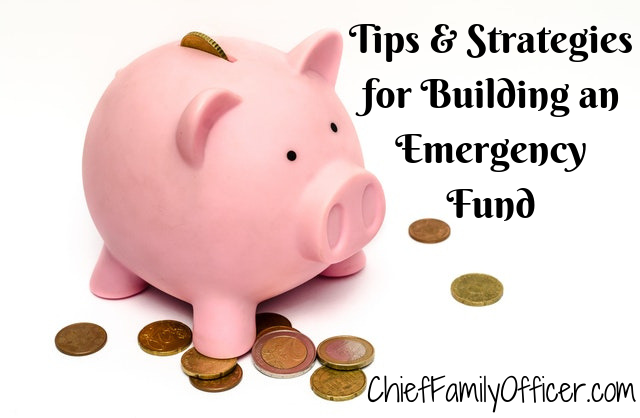
A few months ago, I had to take my son to the emergency room. And while it wasn’t the first time, we were there so briefly, and he needed so little attention from the medical staff, that I was shocked by the bills. They totaled about $1,000 for the twenty minutes that we were in the ER – most of which was spent at intake, then waiting for the doctor and the nurse. They just gave him some pills and a prescription - it's not like they even ran any tests.
The kicker is, we have excellent health insurance, and the hospital and doctor were in-network!
Fortunately, we have an emergency fund, and the means to pay off the bills in full without much difficulty. But it got me thinking about the millions of people who wouldn’t be able to pay that bill, or for whom paying it would be a huge struggle. It's certainly easy to understand how just a few medical bills can render a family financially unstable.
I can’t emphasize the importance of an emergency fund enough. For one thing, it provides an incredible amount of peace of mind. I realize an emergency fund can't cover every situation - if you have $10,000 saved but need $25,000, you're still in the red. But having even a little bit to fall back on can be a huge lifesaver.
Of course, it’s not easy saving money when you’re having trouble making ends meet. But it’s so worth it. Here are a few ways to find money to set aside:
Eat beans and rice for a week, and put the grocery savings aside.
Sell your stuff. Go through your closets and bookshelves and figure out what you don't need/want anymore. Sell the items that you can, and donate the rest. (Andrea Dekker has tips for selling on Craigslist that might be helpful. Bonus: You might save money simply by finding things you didn't remember you have that you no longer need to purchase.)
Round up every purchase and put the difference into savings. For example, if you pay $14.55 at a restaurant, put $0.45 (or $5.45 if you round up to $20) into savings.
Put all "found" money into savings. This includes rebates, gifts, Swagbucks or Microsoft rewards, and the $5 bill you find in the pocket of the jacket that you're getting ready to sell or donate.
Do a No-Spend Challenge. The idea is to go a specified length of time (usually a month) without spending any money except on perishables. If you specifically want to do a Pantry Challenge, Good Cheap Eats has lots of inspiration.
Create a side hustle or take on a new job. Chris Guillebeau's Side Hustle School is is full of inspirational stories about people who've created a side income. If that's not your kind of thing, try signing up with a company like TaskRabbit or Upwork, where you can offer a service to someone who needs it (e.g., housecleaning, furniture assembly, or graphic design).
Live by the old adage: Use it up, wear it out, make it do or do without. This is a great mindset to live by all the time, but one I often fall out of. However, writing this post put me back in it, and I just sewed up a torn seam on a cheap pair of yoga pants instead of simply throwing them out!
It may help to remember that your new lifestyle doesn't have to be permanent. You might find that you can live comfortably on less money than you thought, or that watching your savings build up is incredibly exciting and motivating. But if not, set a goal for your emergency fund - usually six months' worth of living expenses, but even one month can provide a lot of peace of mind. And know that you can relax the purse strings once you hit your goal.
I know I'm barely scratching the surface when it comes to ways to build up an emergency fund. What's worked for you?




No comments:
Post a Comment